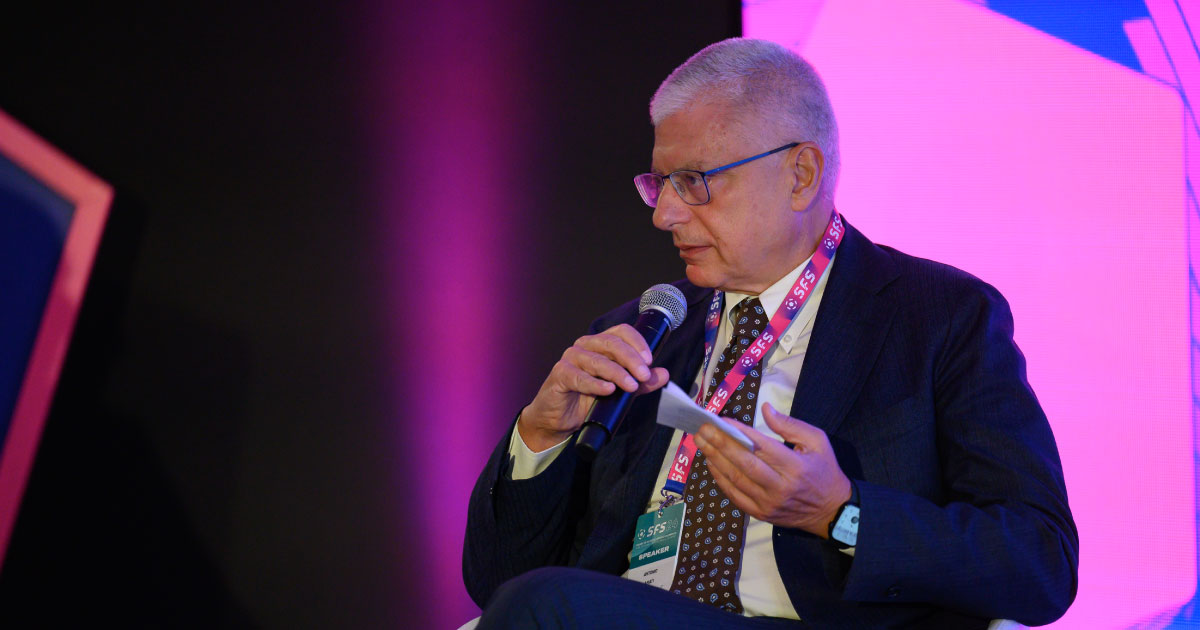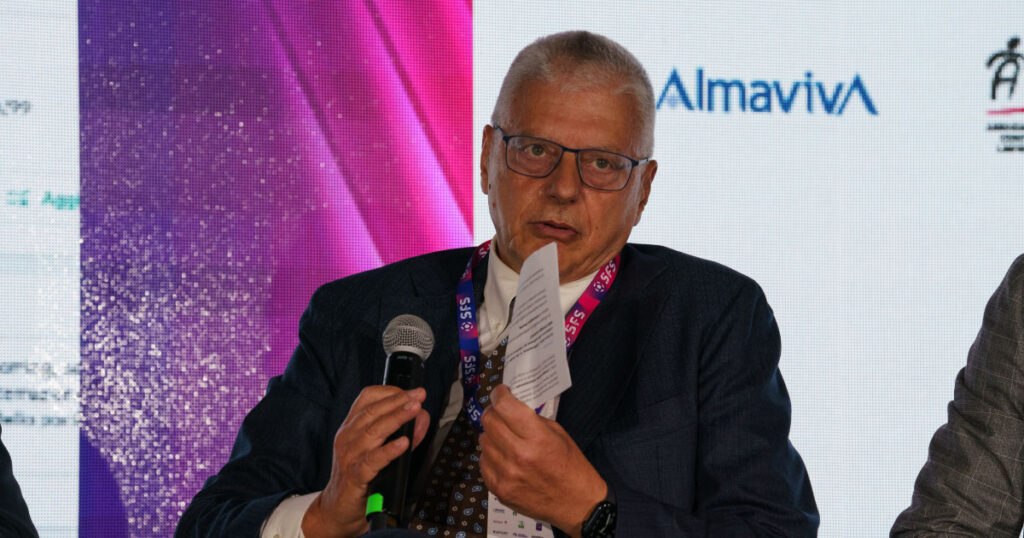
Innovation and Telerehabilitation: The Future of Digital Health and Athletic Wellbeing
On January 5, 2025, within Almaviva’s space at Casa Italia (Localizer Mall Gate 2/3, Riyadh), the event “Italy and Saudi Arabia in the Telerehabilitation: Innovation, Exchange and Growth of the Industry” will take place. Organized by SFS in collaboration with the Italian Embassy in Riyadh and the Italian Trade Agency, the event will highlight advancements in telerehabilitation.
Among the speakers at the panel “Looking to the Future with Ambition: The Telerehabilitation Revolution and the Importance of Collaboration Between Countries” will be Antonio Amati, Deputy CEO of the IT Division at Almaviva, to whom we posed a few questions before his departure for Riyadh.
Almaviva is a leader in digital innovation and technological transformation across various sectors. How is the company supporting the Telerehabilitation sector, and what role does it play in the digitalization of healthcare?
Through the integration of advanced technologies and telemedicine, it is possible to offer personalized and adaptive solutions that meet the specific needs of each patient, truly placing them at the center of their recovery journey. At Almaviva, we firmly believe in the virtuous combination of Sports and Technology, which moves beyond the outdated reactive concept of patient health to introduce a paradigm of personal well-being within a One-Health framework. For this reason, we are aware of the immense potential that Telerehabilitation can also have in the sports sector. This vision and spirit of innovation have led to the creation of the HELIOS Telerehabilitation Platform, part of a broader suite of digital solutions for the healthcare sector.
In particular, we are in the advanced stages of experimentation with Villa Beretta, a center of absolute excellence in the field of rehabilitation. As a scientific partner, Villa Beretta has provided knowledge of advanced clinical models and applied rehabilitation pathways, while Almaviva, as a technology partner, has contributed significantly to the adoption of cutting-edge digital technologies.

In the context of cooperation between Italy and Saudi Arabia, what are the main challenges and opportunities for Almaviva in promoting the adoption of telerehabilitation, particularly in football and other sports?
Sports telerehabilitation is a new frontier that enables the monitoring of athletes’ progress remotely, offering them continuous and personalized support. We are convinced that Saudi Arabia, which is highly attentive to technological innovation and its advantages, and increasingly active and present on the global sports stage, is very interested in how the integration of advanced technologies and telemedicine can offer more efficient solutions and open up new areas of intervention.
Almaviva has experience in integrating advanced technologies such as artificial intelligence and data analysis. How can these solutions help improve digital rehabilitation processes and make them more accessible?
Through advanced data analysis tools and next-generation sensors, we can assist athletes, even remotely, enabling them to recover from injuries in a safe, controlled, and swift manner, reducing the risk of relapses and enhancing the maintenance of long-term performance. The experimentation process has helped refine the HELIOS platform, which offers digital solutions for the healthcare market and effectively supports athletes’ rehabilitation. It selects from a catalog of sports recovery programs tailored to the athlete’s needs and the specifics of the sport practiced. This is achieved using technologies such as Augmented Reality and Virtual Reality, IoT devices for monitoring biomechanical and physiological parameters, motion sensors, wearable devices, and predictive analytics powered by artificial intelligence engines and large data volumes.
With the evolution of the healthcare and sports sectors, how do you see the importance of collaboration between technology companies and healthcare institutions in accelerating the development of telerehabilitation on an international scale?
Such collaboration is strategic in terms of both effectiveness and efficiency. A survey conducted in 2023 showed that 70% of patients who used Telerehabilitation programs reported significant improvements in managing their condition. Additionally, 65% expressed greater satisfaction compared to traditional treatments.
Recent estimates suggest that implementing Telerehabilitation programs could reduce overall rehabilitation costs by approximately 30% through resource optimization. It is therefore evident that the benefits—for patients, clinicians, and healthcare expenditure—are increasingly driving the adoption of these solutions. Indeed, projections indicate that by 2025, the number of patients using Telerehabilitation in Italy could increase by 50%.
Looking to the future, what innovations do you see in the field of Telerehabilitation that could revolutionize not only patient treatment but also how athletes and teams manage their preparation and recovery?
The digital technologies are here; they need to be interpreted and adopted. For example, the Helios platform is also well-suited for injury prevention, a crucial aspect of the sports world. By continuously analyzing the data collected during training and recovery sessions, it is possible to identify muscle or postural imbalances, alerting trainers or physiotherapists to the onset of potential issues. In this way, Helios can become a valuable tool not only for rehabilitation but also for training and comprehensive athletic health monitoring, ensuring greater sports longevity and improved performance.



